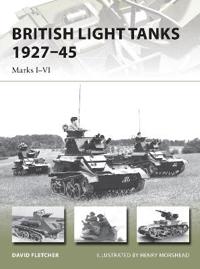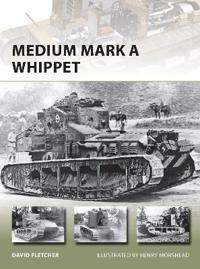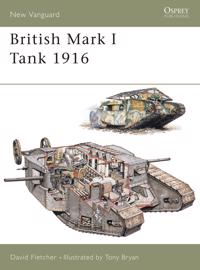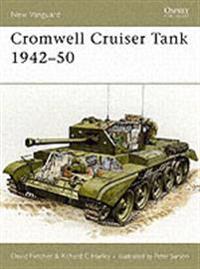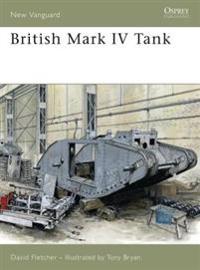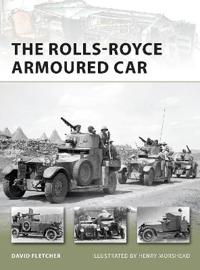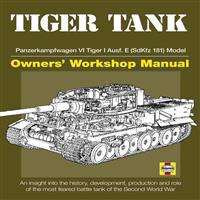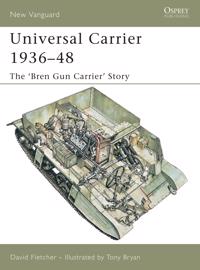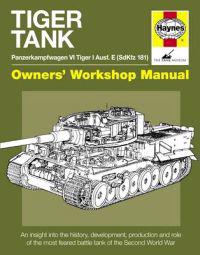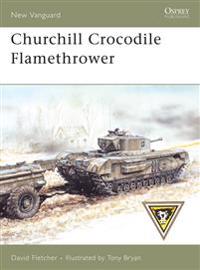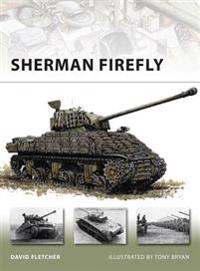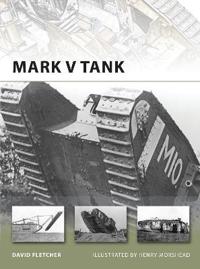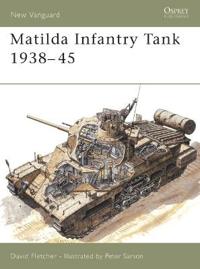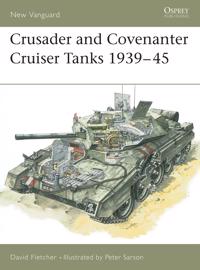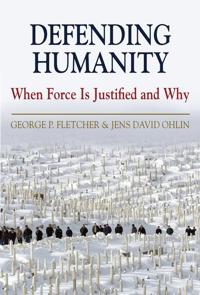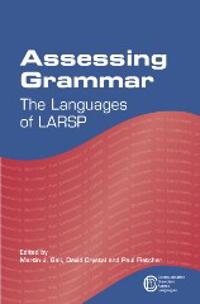British Light Tanks 1927-45 (Pocket)
avDavid Fletcher, Henry (ILT) Morshead, David Fletcher
ISBN: 9781782003779 - UTGIVEN: 2014-12This is the definitive study of British light tanks of the Second World War. The author draws upon a vast and comprehensive body of archival information and research to explore their technical characteristics and combat performance. The title focuses largely on the very widely used Mark VI, but also[...]
Medium Mark A Whippet (Pocket)
avDavid Fletcher, Henry (ILT) Morshead, David Fletcher
ISBN: 9781782003984 - UTGIVEN: 2014-05This title looks at the Medium Mark A Whippet, one of the most successful British tanks of World War I and, when placed alongside existing titles covering the Mark I, Mark IV and Mark V, completes the New Vanguard series' coverage of the major British tanks of the war. The evolution of the Whippet i[...]
British Mark I Tank 1916 (Pocket)
avDavid Fletcher, Tony (ILT) Bryan, David Fletcher
ISBN: 9781841766898 - UTGIVEN: 2004-07In 1915 a machine christened Little Willie changed the way that wars were fought. Little Willie was a fully tracked armoured vehicle that could break a trench system. Its development was completed in December 1915, but by then it had already been superseded by an improved design, Mother. This was th[...]
Cromwell Cruiser Tank 1942-50 (Pocket)
avDavid Fletcher, Peter (ILT) Sarson, David Fletcher
ISBN: 9781841768144 - UTGIVEN: 2006-03For most of World War II, British tank development remained faithful to the design philosophy inaugurated during World War I. Experiences in North Africa highlighted flaws in this basic design, however, and the General Staff identified the need for a new heavy cruiser that could combine speed and ma[...]
British Mark IV Tank (Pocket)
avDavid Fletcher, Tony (ILT) Bryan, David Fletcher
ISBN: 9781846030826 - UTGIVEN: 2007-04Amongst the first ever mass-produced tanks in history, the British Mk IV has been classified as one of the most successful heavy tanks to have fought in World War I. It proved its worth at the landmark battle of Cambrai in November 1917, when 460 Mark IVs were deployed for the first time against the[...]
The Rolls-Royce Armoured Car (Pocket)
avDavid Fletcher, Henry (ILT) Morshead, David Fletcher
ISBN: 9781849085809 - UTGIVEN: 2012-04The first Rolls-Royce armoured car was a privately owned vehicle fitted with a machine-gun and a limited amount of armour plate at a dockyard in France. It was used by a squadron of the Royal Naval Air Service in Flanders in 1914. Backed by First Lord of the Admiralty, Winston Churchill more and bet[...]
Tiger Tank Owners' Workshop Manual: Panzerkampfwagen VI Tiger 1 Ausf.E (SdKfz 181) (Inbunden)
avDavid Fletcher, David Willey, Mike Hayton
ISBN: 9780760340783 - UTGIVEN: 201107Universal Carrier 1936-48 (Häftad)
avDavid Fletcher
ISBN: 9781841768137 - UTGIVEN: 200506The Universal Carrier was a fast, lightly armed vehicle developed by the British Army to carry infantry across ground defended by small-arms fire; specifically the Bren light machine gun, hence the name 'Bren Gun Carrier'. This name would stick with the Universal Carrier and all of its future varian[...]
Tiger Tank Manual (Inbunden)
avMichael Hayton, Stephen Vyse, David Fletcher
ISBN: 9781844259311 - UTGIVEN: 201105The German Tiger I was the most feared battle tank of the Second World War. Its invincibility lay in its main gun and heavy defensive armour. Using the successful "Haynes Manual" format, the "Tiger Tank Manual" gives an insight into acquiring, owning and operating one of these awesome fighting vehic[...]
Churchill Crocodile Flamethrower (Häftad)
avDavid Fletcher
ISBN: 9781846030833 - UTGIVEN: 2007-07A fire-breathing monster on the battlefield, the Churchill Crocodile was one of the most awe-inspiring weapons of World War II. Tank expert David Fletcher chronicles the development of the flamethrower tank, examining the dramatic effect of these tanks in battle from use in France to the terrifying [...]
Sherman Firefly (Häftad)
avDavid Fletcher
ISBN: 9781846032776 - UTGIVEN: 200802The most powerfully gunned tank fielded by the Allies during World War II was the Sherman Firefly. An ordinary American-built Sherman modified by the British, the Firefly had the firepower that could finally match the awesome German tanks that had dominated Europe. David Fletcher examines the contro[...]
Mark V Tank (Häftad)
avDavid Fletcher
ISBN: 9781849083515 - UTGIVEN: 2011-04Although, to the casual eye, all British tanks of World War I look much the same, the Mark V is quite outstanding and has a strong claim to be the tank that won the Great War. In this title, renowned tank expert David Fletcher examines the technological developments that made this tank excel where o[...]
The Matilda Infantry Tank 1938-1945 (Häftad)
avDavid Fletcher
ISBN: 9781855324572 - UTGIVEN: 199401The Matilda was the principal British infantry tank in the early years of World War II. It served with the BEF in France and later in North Africa, where it earned the title 'Queen of the Desert'. Outclassed by increasingly powerful German anti-tank weapons, it still remained a power in the South-Ea[...]
The Crusader and Covenanter Cruiser Tanks 1939-45 (Häftad)
avDavid Fletcher
ISBN: 9781855325128 - UTGIVEN: 199505The Covenanter (which never saw active service) and Crusader Cruiser tanks were developed between 1939 and 1940. The Crusader first saw action in the North African desert in June 1941: its speed and sleek design made it a hard target to hit, and the tank was well-respected by the Afrikakorps for its[...]
Defending Humanity (Pocket)
avGeorge P. Fletcher, Jens David Ohlin, George P. Fletcher
ISBN: 9780199757213 - UTGIVEN: 201303In Defending Humanity , internationally acclaimed legal scholar George P. Fletcher and Jens David Ohlin, a leading expert on international criminal law, tackle one of the most important and controversial questions of our time: When is war justified? When a nation is attacked, few would deny that it [...]
Normal Binocular Vision: Theory, Investigation and Practical Aspects (Häftad)
avDavid Stidwill, Robert Fletcher, D'orth, Dclp, Professor
ISBN: 9781405192507 - UTGIVEN: 2010-10-31Assessing Grammar (Pocket)
avMartin J. (EDT) Ball, David (EDT) Crystal, Paul (EDT) Fletcher
ISBN: 9781847696373 - UTGIVEN: 2012-02This collection is a resource book for those working with language disordered clients in a range of languages. It collects together versions of the well-known Language Assessment Remediation Screening Procedure (LARSP) prepared for different languages. Starting with the original version for English,[...]

